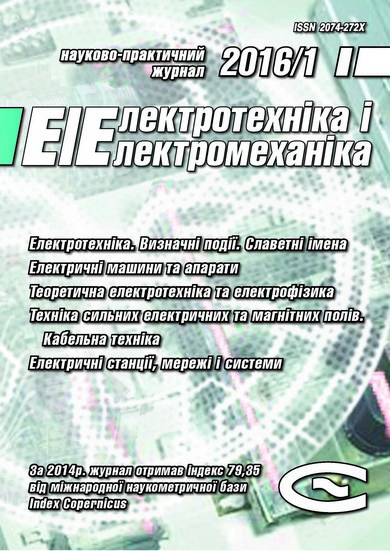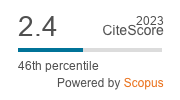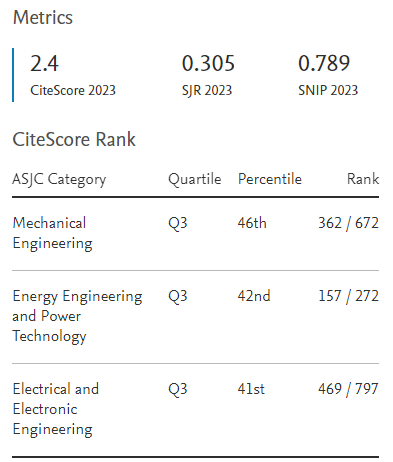USING OF OBJECT-ORIENTED DESIGN PRINCIPLES IN ELECTRIC MACHINES DEVELOPMENT
DOI:
https://doi.org/10.20998/2074-272X.2016.1.03Keywords:
electric machine, object-oriented, class, object, template, inheritance, hierarchy, designing, mathematical modeling, electromagnetic field, optimization, algorithmAbstract
Purpose. To develop the theoretical basis of electrical machines object-oriented design, mathematical models and software to improve their design synthesis, analysis and optimization. Methodology. We have applied object-oriented design theory in electric machines optimal design and mathematical modelling of electromagnetic transients and electromagnetic field distribution. We have correlated the simulated results with the experimental data obtained by means of the double-stator screw dryer with an external solid rotor, brushless turbo-generator exciter and induction motor with squirrel cage rotor. Results. We have developed object-oriented design methodology, transient mathematical modelling and electromagnetic field equations templates for cylindrical electrical machines, improved and remade Cartesian product and genetic optimization algorithms. This allows to develop electrical machines classifications models, included not only structure development but also parallel synthesis of mathematical models and design software, to improve electric machines efficiency and technical performance. Originality. For the first time, we have applied a new way of design and modelling of electrical machines, which is based on the basic concepts of the object-oriented analysis. For the first time is suggested to use a single class template for structural and system organization of electrical machines, invariant to their specific variety. Practical value. We have manufactured screw dryer for coil dust drying and mixing based on the performed object-oriented theory. We have developed object-oriented software for design and optimization of induction motor with squirrel cage rotor of AIR series and brushless turbo-generator exciter. The experimental studies have confirmed the adequacy of the developed object-oriented design methodology.References
Expediting and validating development. Available at: http://www.iff.fraunhofer.de/en (accessed 12 September 2015).
R-Designed. Available at: http://blog.caranddriver.com/r-designed-2016-volvo-xc90-gets-the-sporty-r-design-treatment-still-isnt-on-sale-yet/ (accessed 12 September 2015).
Pliugin V.E. Teoreticheskie osnovy ob’ektno-orientirovannogo rascheta i proektirovaniia elektromekhanicheskikh ustroistv [Theoretical basis of electromechanical devices object-oriented calculation and design]. Alchevsk, Lado Publ., 2014. 200 p. (Rus).
Pliugin V., Milykh V., Polivianchuk A., Zablodskiy N. Using of object-oriented design principles in mathematic modeling of electric machines. MOTROL – Motoryzacja i Energetyka Rolnictwa, 2015, vol.15, no.2, pp. 25-32.
Pliugin V., Shilkova L., Letl J., Buhr K. Analysis of the electromagnetic field of electric machines based on object-oriented design principles. Proceedings 36th PIERS. Prague: Electromagnetic Academy, 2015, pp. 2522-2527.
Zablodskii M.M., Pliugin V.E., Buhr К. SAPR elektromekhanichnykh prystroiv. – Navchalnyi posibnyk. Ch.2 [CAD of electromechanical devices. – Textbook. Vol.2]. Alchevsk, Lado Publ., 2013. 320 p. (Ukr).
Buch G. Ob’ektno-orientirovannyj analiz i proektirovanie [Object-oriented analysis and design]. Мoscow, Binom Publ., 1998. 560 p. (Rus).
Beljaev E.F., Shulakov N.V. Diskretno-polevye modeli elektricheskih mashin [Discrete field models of electrical machines]. Perm, Perm State Technical University Publ., 2009. 457 p. (Rus).
Vereshhagin N.K., Shen’ А. Lekcii po matematicheskoj logike i teorii algoritmov. Nachala teorii mnozhestv [Lectures on mathematical logic and theory of algorithms. Beginning of set theory]. Мoscow, MCNMO Publ., 2008. 198 p. (Rus).
Emel'janov V.V., Kurejchik V.V., Kurejchik V.М. Teorija i praktika evoljucionnogo modelirovanija [Theory and practice of evolutionary modeling]. Мoscow, Phizmatlit Publ., 2003. 432 p. (Rus).
Zablodskiy N., Pliugin V., Lettl J., Buhr K., Khomitskiy S. Induction motor optimal design by use of cartesian product. Transactions on electrical engineering, 2013, no.2, pp. 54-58.
Zablodskiy N., Pliugin V., Lettl J., Buhr K., Khomitskiy S. Induction motor design by use of genetic optimization algorithms. Transactions on electrical engineering, 2013, no.3, pp. 65-69.
Downloads
Published
How to Cite
Issue
Section
License
Copyright (c) 2016 N. N. Zablodskii, V. E. Pliugin, A. N. Petrenko

This work is licensed under a Creative Commons Attribution-NonCommercial 4.0 International License.
Authors who publish with this journal agree to the following terms:
1. Authors retain copyright and grant the journal right of first publication with the work simultaneously licensed under a Creative Commons Attribution License that allows others to share the work with an acknowledgement of the work's authorship and initial publication in this journal.
2. Authors are able to enter into separate, additional contractual arrangements for the non-exclusive distribution of the journal's published version of the work (e.g., post it to an institutional repository or publish it in a book), with an acknowledgement of its initial publication in this journal.
3. Authors are permitted and encouraged to post their work online (e.g., in institutional repositories or on their website) prior to and during the submission process, as it can lead to productive exchanges, as well as earlier and greater citation of published work.





